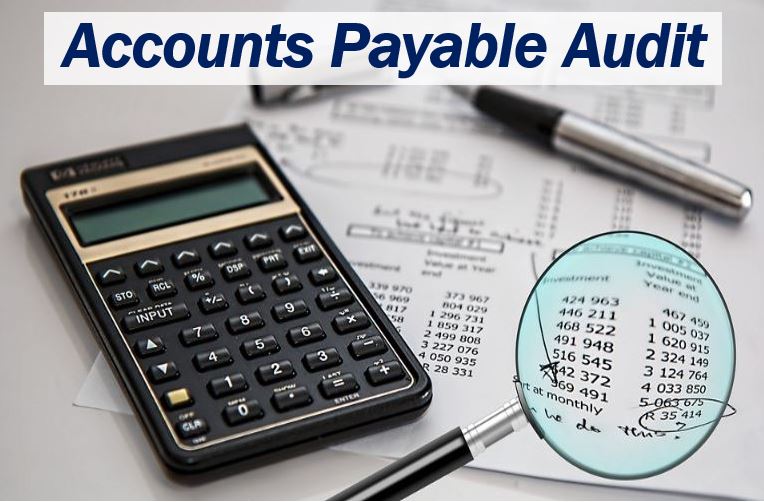 The financial records of a business are fundamental to its success, be it a non-profit organization, university, marketing agency, or health care unit.
The financial records of a business are fundamental to its success, be it a non-profit organization, university, marketing agency, or health care unit.
We refer to any money that a business or any entity owes to its suppliers as accounts payable. It is a current liability account which shows how much a company owes its suppliers for products and services it receives on credit (receive now, pay later) In a company’s balance sheet, it appears as a liability. Accounts payable refers to only short-term and not long-term debts.
Companies have many short-term debts apart from accounts payable. For example, business income taxes, payroll costs (salaries), and short-term loans are classed as short-term debts.
Accounts payable contrasts with accounts receivable, which effectively has the opposite meaning. Accounts receivable is the money that people, companies, and other entities owe your company. In other words, all owed money that will leave the company is accounts payable, while all owed money that will come into the company from outside is accounts receivable.
This article explains what accounts payable audits are and how they benefit a company’s records.
Internal Controls
Internal controls for account audits should include signatures according to the payment amounts. Consider implementing numerous stages of signature requirements.
External audits
In the majority of cases, accounts payable are the testing area in external audits. An external accounts payable audit needs to take a detailed accounts payable listing plus trace totals from from all accounting records up to the summary total. The audit should also include every single bank withdrawal.
The auditor should then select some items for in-depth testing. Payees, selected at random, should be contacted to make sure payment was received.
Auditors should review routine reconciliations for accuracy as well as logical processing. If any reconciliation with major discrepancies is discovered, it should be investigated thoroughly.
Regular checks
Must be well balanced daily to reconcile payments to avoid duplicated records; any kind of discrepancy between the overall quantity paid and the total records ought to be carefully reviewed and balanced on a daily basis. Monitoring oversight of every person associated with the balancing of this account should be stringent and ought to include routine monitoring of tasks. Supervisors must be trained to look for any kind of signs of lapses by any personnel.
Altering ideal practices
All of these concerns directly affect an organization’s earnings, an ultimately, its bottom line, i.e., profits. While solid internal control offers protection, the best-practice firms regularly audit their invoice processing to ensure their controls are still in place and are being used.
All organizations should regularly assess what everybody is doing to make sure that there are no practoces or procedures that need improving. Only with regular checks can an organization be sure that it has the best practices and procedures possible.
Some recent examples include confirming wire transfer needs from the CEO and the change of address requests from suppliers.
Insights from problem invoices
Discrepant invoices need to be tracked independently. Lots of managers will certainly handle this in an excel spreadsheet. This can be utilized to monitor the invoices also to make sure that they are settled correctly and promptly. With a little added initiative, this spreadsheet can be used not only to track the resolution of problems but also to know the source of troubles and how to fix them.
The basic audit
Utilize the quick list below every 6 months to make certain that your processes, as well as your staff, are not accidentally creating a control issue that eventually could result in a serious hit to the organization’s profits. Identifying trouble early and fixing it will certainly help prevent a major problem, or even a disaster. The list below will aid you to achieve the process.
The quick invoice audit checklist
A comprehensive created invoice managing procedure should be examined at least annually to guarantee it satisfies existing demands.
A copy of one of the most recent invoices managing procedures has been provided to each processor as well as supervisors in charge of invoices.
A strict coding criterion, which matches the common means for recording data in the master vendor documents, has been established and also shared with each departmental head.
Workers are instructed to pay as much attention to the invoice number as they do to the buck quantity when entering or assessing billing information.
Suppliers are advised to send out invoices to one location; they ought to include a mailing address and unique e-mail, representing the invoices and using a single valid telephone number is also advisable.
Periodically, and on a surprise basis, the manager or various other interim managers will sit with each departmental head to ensure they are still complying with the composed directions for handling invoices and utilizing the coding requirement.
No processor is also establishing suppliers up in the master vendor documents, transforming info about an existing vendor, or has the capacity to do so.
Make sure your invoice administration is in control and all set for audit.

